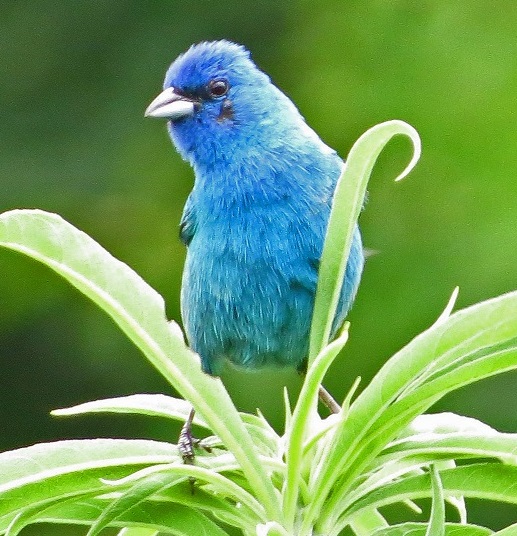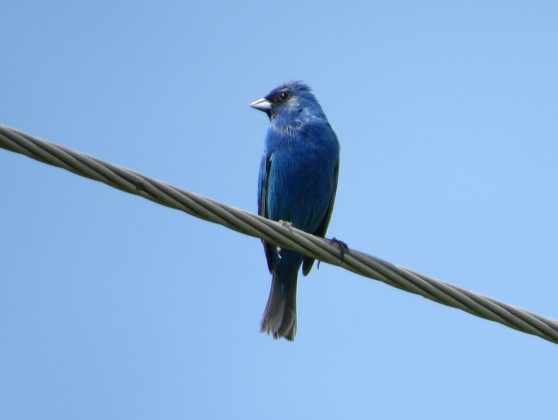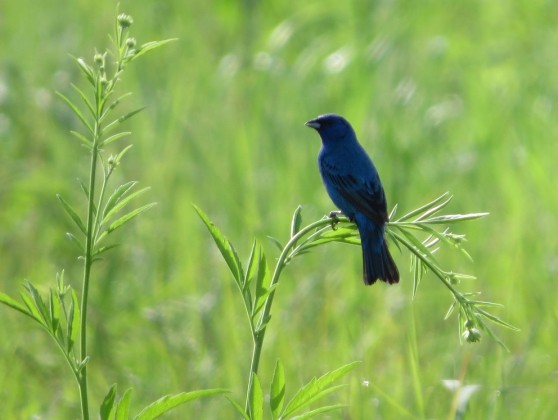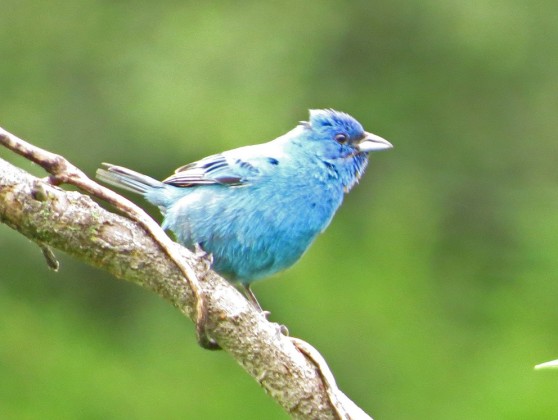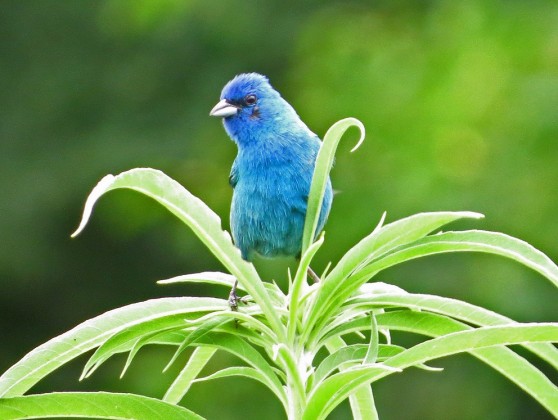Several people have asked me about small blue birds that come to their feeders. These sparrow-sized birds are indigo buntings and are being seen more frequently than in past years.
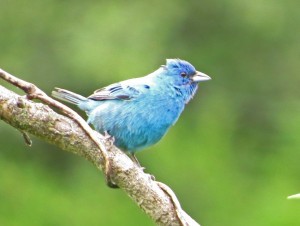
The male’s brilliant cobalt-blue color makes it one of Iowa’s most conspicuous song birds, one not to be confused with the eastern bluebird, which is larger and has an orange breast.
The indigo bunting’s range is east of the Rocky Mountains, covering two-thirds of the U.S. and parts of southern Canada. Ornithologists report the indigo buntings are expanding their range and increasing in numbers.
The birds’ preferred habitat is in woodland edge, hedgerows, suburbs and small towns. They are seldom seen in urban areas, deep woods or cultivated fields.
These little birds are a summer resident of Iowa, and they found all over the state.
The indigo buntings arrive here in early May, and most leave Iowa by mid-September. They have a nearly 2,000-mile journey to their wintering areas in Central America, Columbia and Venezuela. They fly during the night and use stars to navigate their course. Most of the time the birds return to the same area where they were born.
The male indigo bunting is easy to spot because of his bright coloration. The female, however, is harder to see and identify. The female is brown, with only the wings and tail feathers showing a hint of blue. Females also stay low to the ground and feed in thick shrubbery.
The female indigo bunting does most of the work of building a nest, incubating the eggs and feeding the young. Her small cup-shaped nest is built a few feet off the ground for her four to five bluish-white eggs.
The young hatch in two weeks and fledge two weeks after hatching. The chicks develop quickly on the diet of protein-rich insects their parents feed them. Frequently, a mated pair of indigo buntings will raise a second brood. The male helps with some of the feeding of the young.
In most cases males are monogamous, but he sometimes mates with two or more females in his territory.
According to Professor James Dinsmore of Iowa State University, the brown-headed cowbird frequently lays its eggs in the indigo bunting’s nest. According to his study of 41 bunting nests, 29 contained cowbird eggs.
Besides being a beautiful little bird, the male indigo bunting has a very nice song. It is described as a rapid warble, with each high-pitched note and phrase sung twice. It is often paraphrased, “Sweet sweet, where where, here, here.”
The male begins singing in May and continues into August, much later than other song birds.
According to Gladys Black in “Iowa Bird Life,” “The indigo bunting’s singing is not deterred by high temperatures like other birds, in fact the hotter the day the longer he sings.” Black says the male indigo bunting will often sing his song six times per minute.
Because they are very pretty and have a pleasing song, they are often kept as caged birds in Latin America and in some parts of Europe.
They are also great birds to have in your yard. They eat many weed seeds, spiders, mosquitoes and insects that harm plants. You can invite them to come to your yard by having a bird feeder, bushes for cover and a source of water.



